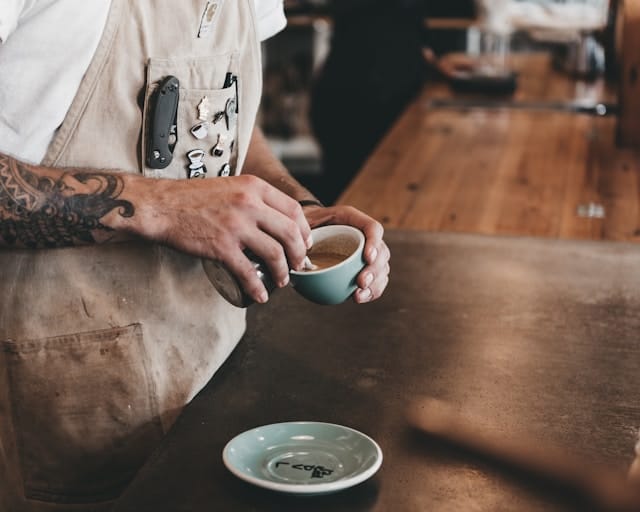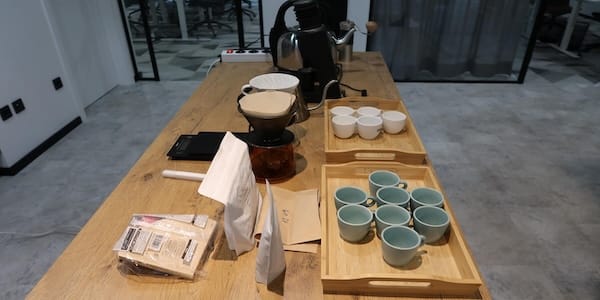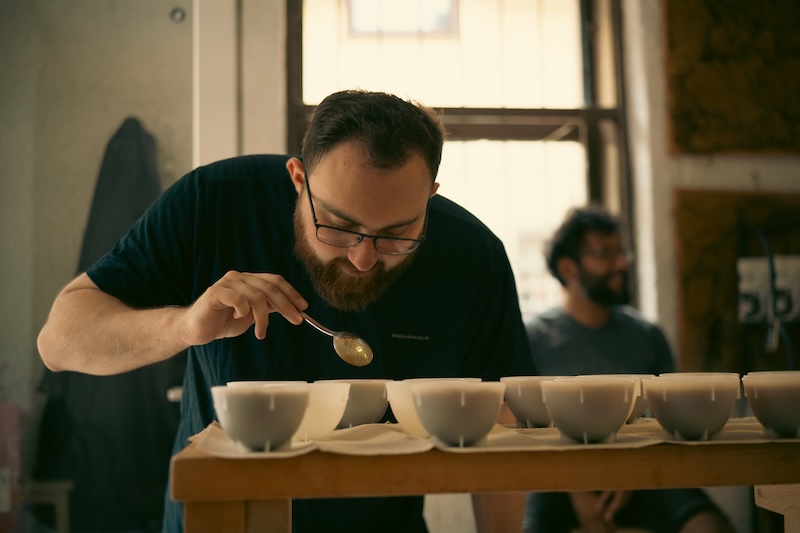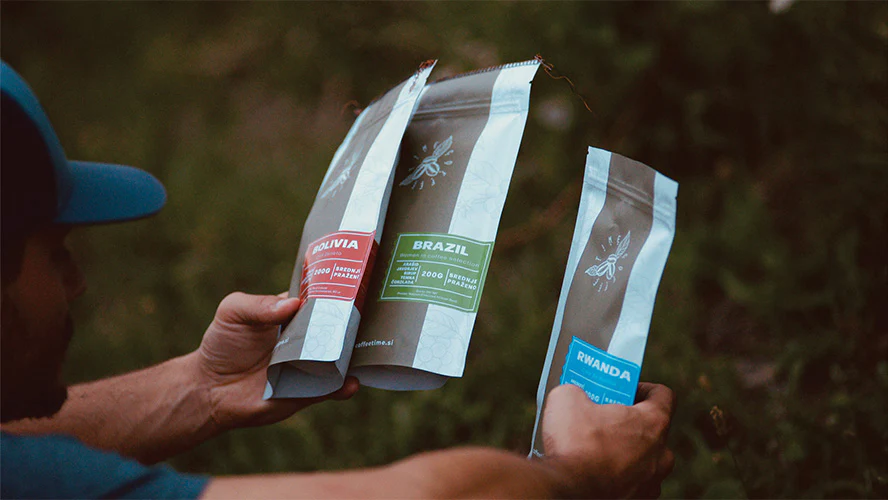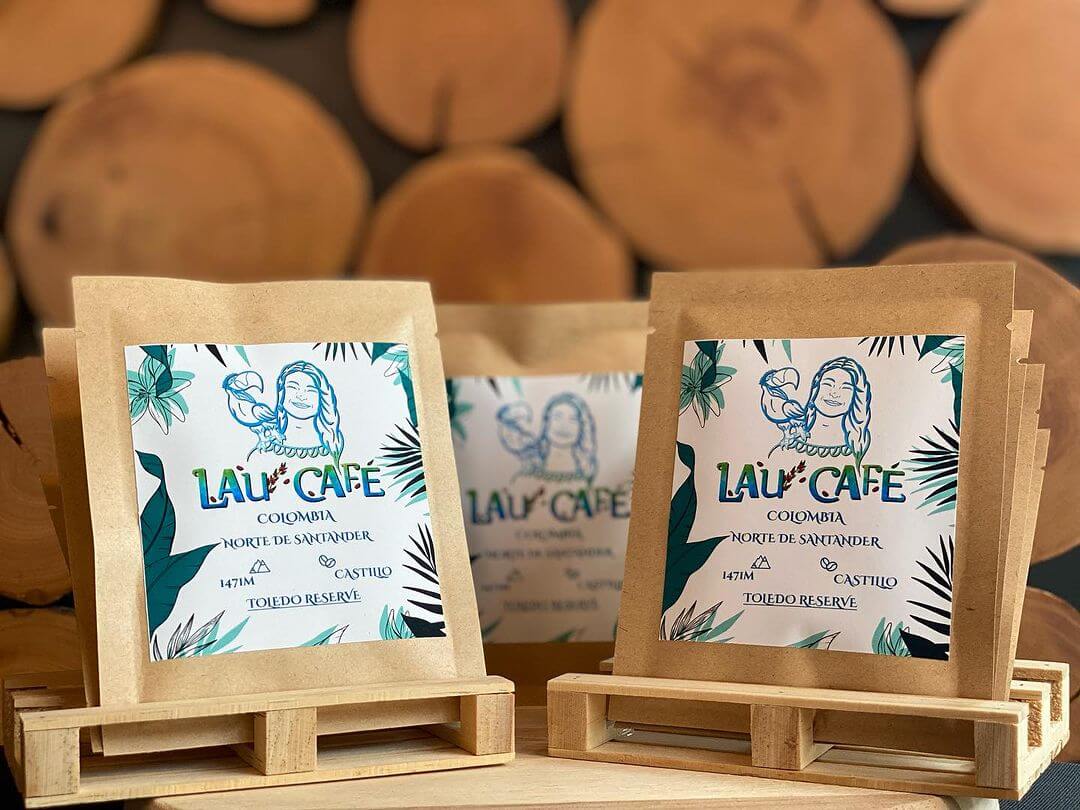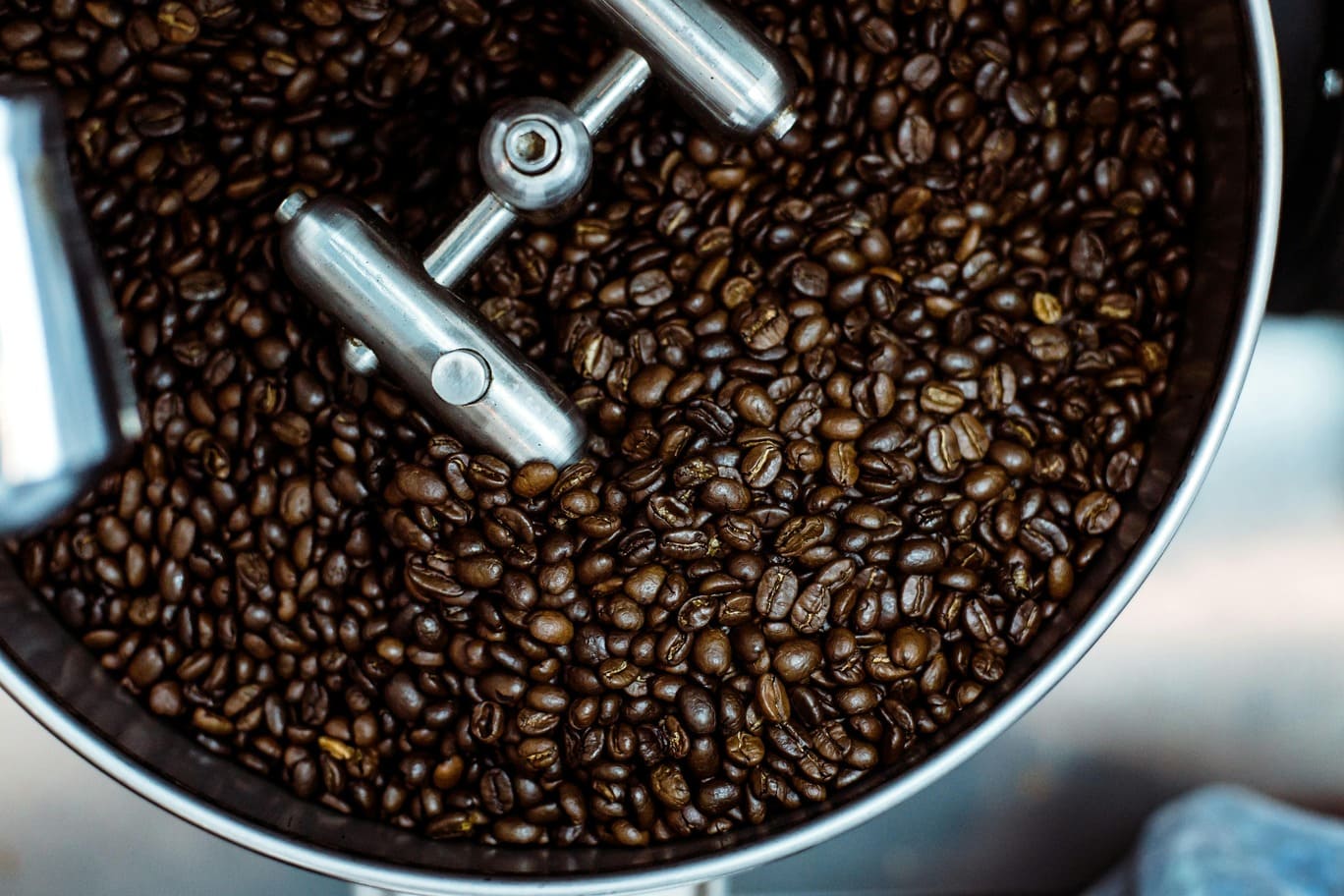ALL POSTS
ALL POSTS
Slovene Specialty Micro Coffee Roastery: RUDYS
12 min read
Last edit: Jan 9, 2025
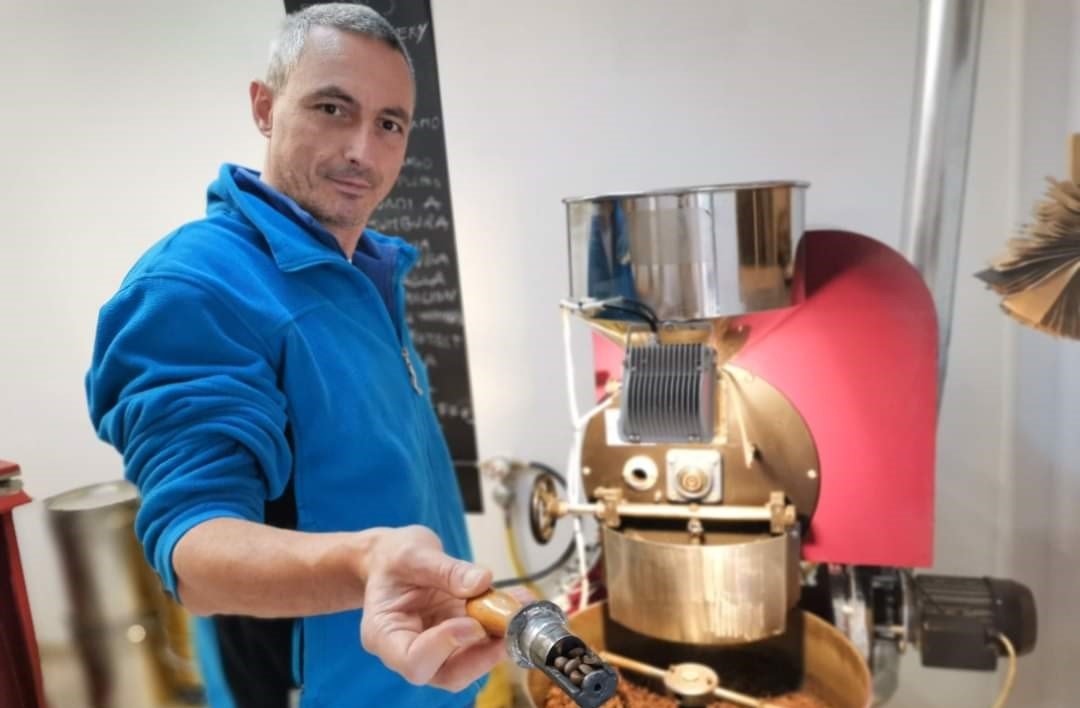
Slovenia is full of hidden gems. Whether you are in for a hike in the mountains or want to take some sunlight on a beach Slovenia has it all. But also, Slovenia has specialty coffee. And sometimes the best specialty coffee hides in a plain sight. In this article we are unveiling where to find great roasted coffee outside Ljubljana and Maribor but rather in a small town of Logatec. Roasting a rare specialty coffee here is Rudy of Rudys Coffee.
Meet Rudy, the Roast-Master
– Hi Rudy! Thank you for finding an interview as something interesting!
– Hey Lev, thank you for offering to tell my coffee story!
– To start off, care to tell how your coffee career started?
– In my hometown, since I was a child, my mom would ask me to go buy coffee from a small roastery that ground the coffee on the spot. I still remember the aroma! These are things that stay imprinted in your memory, and perhaps today I can say that I was destined to enter the world of coffee. Then, the passion came when I started having coffee regularly and later began to research it.
– But what was the trigger to start your own specialty coffee business?
– I decided to approach this product because specialty coffee is a natural choice for those seeking quality. Becoming a specialty coffee roaster is often the result of a combination of a passion for coffee, a desire for superior quality, a search for independence, and an interest in the art and science of roasting. The desire to have one’s own business and the ability to control every aspect of production and product quality have been some of the most powerful motivations for me to become a specialty coffee roaster. Every roaster has a unique story, but these common factors often play a crucial role in the decision to undertake this activity.
– When did you start your own roastery and why? Does your project pursue a mission or maybe has a philosophy built in the brand?
– My experience in the world of coffee began about 10 years ago with the purchase of a small roaster and the first bag of green coffee beans. I started experimenting with roasting and letting my coffee be tasted by family and friends. Later on, I took blending and roasting courses in Florence, visited roasteries, and sought to gather information and secrets. I had delved into a world that was immediately fascinating but not without its pitfalls and challenges.
My roastery is a small micro-roastery that focuses on sourcing and roasting high-quality coffee beans and promoting coffee excellence. I believe that coffee can tell stories and create connections, and I see my roastery as a link between people who share my same passion.
The mission of my roastery is to support ethical and sustainable practices in both the sourcing and production of coffee. The philosophy guiding my work is to value every stage of the process, from bean to cup, to offer an authentic and unforgettable coffee experience. Through events, tastings, and training courses, I am committed to spreading the culture of specialty coffee and educating consumers about the unique characteristics of each origin and processing method. I want every cup of coffee I produce to be a sensory and cultural journey, capable of conveying the passion and dedication we put into our daily work.
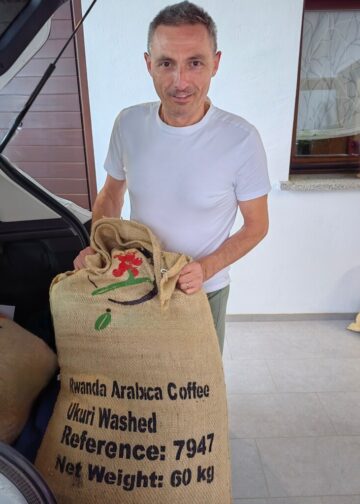
– So you had specialized training. May I ask what kind of courses you attended?
– Yes, after purchasing my first small roaster, I took coffee blending and roasting courses in Florence at Mokaflor. These courses were crucial for gaining a solid theoretical and practical foundation. During my studies, I had the opportunity to meet some of the most important specialty coffee roasters and experts, who inspired me and provided valuable advice.
Training didn’t stop with the initial courses. I firmly believe that learning is a continuous process, especially in a dynamic field like coffee. For this reason, I continue to dedicate time to reading books, articles, and specialized publications, and I participate in events and workshops. These moments of updating are essential to stay current with the latest trends, techniques, and innovations in the roasting world.
– What kind of coffee roaster machine do you currently use?
– Currently, I use an Italian STA coffee roaster with a 5 kg capacity per batch, which is a fundamental element in my roasting process. Although this roaster is relatively compact, it offers manual control that allows me to manage every detail of the roasting process with precision and care.
Ultimately, the STA coffee roaster is not just a tool but an indispensable companion in my coffee roasting journey, enabling me to transform every coffee bean into a unique and refined sensory experience.
– You have a big range of coffee origins to choose from. What is the process of choosing coffee to add to the collection?
– I like to always maintain a wide selection of coffee by purchasing small quantities more frequently. I receive and request samples, both to roast and already roasted, depending on the case. After receiving the samples, I conduct tastings and tests across all types of extraction: espresso, filter, stovetop, and Turkish. This allows me to evaluate how each coffee performs in different preparations and discover its unique profiles.
During the tasting process, I focus not only on the aromatic profiles and flavors but also on the consistency and overall quality of the cup. Additionally, dialogue with producers and roasters is essential to understand the characteristics of the coffees and their origins. This allows me to select batches that are not only excellent but also tell a story and reflect the traditions and techniques of their places of origin. With each new batch I add, I aim to offer a piece of that story and a new sensory experience for coffee lovers.
– How does your average day in a roastery look like?
– Naturally, I start my day with a good cup of coffee, it’s the perfect way to kick off a day filled with coffee-related activities. As I savor that first cup, I review my schedule and prioritize the tasks ahead.
– I noticed several blends in your lineup. If it is not a commercial secret, can you share the way you approach blending? Do you pre-mix green coffee beans and roast them as one or you blend already roasted coffee?
– I have always had three types of blends in my range and will continue to maintain them, as variety is essential to meet the different preferences and consumption methods of my clientele.
I have two 100% Arabica blends, each with unique characteristics and SCA scores above 80. All blends are personally crafted by me, and I roast lots in them separately before blending them. This process, although complex, allows me to highlight the individual characteristics of each origin and achieve a balanced and harmonious combination. In this approach, each coffee retains its identity, contributing to a final blend that reflects a perfect balance between the various aromatic nuances.
The third blend is a pre-mixed blend that I roast using two different roasting profiles. Using different roasting profiles for the same blend can enhance certain coffee characteristics, creating a range of flavors that enriches with every cup.
The key to successful blending is the quality of the beans and precision in roasting. Through specialized courses and careful experimentation, I have learned how to manage these processes effectively, addressing challenges and continuously improving my techniques. Each blend is the result of meticulous research and a continuous commitment to offering customers coffee that not only meets but exceeds their expectations. My goal is to provide a unique tasting experience that reflects the quality and care with which the coffee has been selected, roasted, and blended
– Lets go from the roaster to the coffee bar for a moment. I assume you are knowledgeable not only in roasting but also in brewing coffee. What is your go-to coffee drink? Maybe a special recipe?
– Although I am not a professional barista, I really enjoy exploring and experimenting with coffee equipment, and I find great satisfaction in extraction and preparation. My favorite coffee drink is the double shot espresso, which allows me to appreciate the concentration and complexity of flavors in all their intensity. The double shot of espresso is my benchmark for testing and savoring the nuances of every Specialty coffee I roast.
Naturally, with Specialty coffees, I also conduct tests with filter extraction, primarily using light roasting profiles. I mainly use the Chemex and the V60 for filter coffee preparation. These methods allow me to appreciate the clarity and delicacy of the aromatic notes of the coffees I select. The Chemex, with its thick filter, produces a particularly clean coffee free of sediment, while the V60 offers greater control over the extraction, allowing me to experiment with time and water flow to achieve the perfect cup.
Being Italian, it’s only natural that I also use the classic Moka pot and the Neapolitan coffee maker. Growing up with the Moka pot, I have developed an emotional connection with this traditional coffee maker. The Neapolitan coffee maker, with its inverted brewing method, is another of my favorites. Its slow and meticulous extraction process yields a rich and balanced coffee with a unique depth of flavor.
In the summer, I prefer a double espresso tonic. My recipe is 18 grams of Specialty coffee with not too acidic notes (my favorite is Honduras La Esmeralda) with an equal amount of tonic water (40 grams of coffee extraction and 40 grams of tonic water), two or three ice cubes, and a slice of lemon.
For the more adventurous and experimental, a bit of artisanal gin can also be added. And as I always wish, enjoy your Specialty coffee everyone.
– Can you maybe share what are the top 3 coffees from your collection? Have you already cracked the reason why these lots are so popular?
– Among the blends, the Soul Blend, among Specialty coffees Colombia Women’s Project San Alberto, Brazil Caramelo, and Rwanda Gahara, is currently the best-seller. However, all the Specialty coffees I purchase have always given me great satisfaction. Of course, there are some to which I am more personally attached.
– Today we see a rapid growth in the popularity of alterated coffees. Infused or co-fermented beans with funky and strikingly easy to recognize flavors. What is your opinion on this trend? Will there be an infused coffee in your collection?
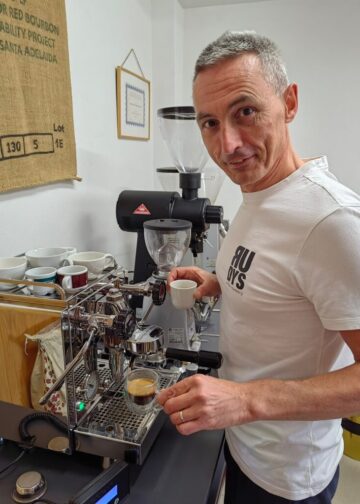
– Each new thing brings a wave of excitement, but also many doubts. The trend was initiated by producers, especially from Costa Rica and Colombia, who have adopted co-fermentation and cultivation methods. In Japan, the market is reacting positively, but in Europe, we still need to see how consumers will respond. Before incorporating co-fermented coffees into my range, I plan to thoroughly review the available documentation and conduct precise tests. This includes assessing how different co-fermentation or infusion methods impact the coffee’s characteristics during roasting and extraction. Each stage, from roasting to extraction, may require adjustments to ensure that the resulting flavor profile is consistent and of high quality. Significant changes may be needed in the roasting phase, such as more or less drying of the beans or different management of the first crack. It is essential to monitor and adapt the process to achieve the best results and preserve the distinctive characteristics of co-fermented coffee.
In conclusion, while the trend of co-fermented coffees represents a breath of freshness and innovation, it is crucial to approach it with a methodical and well-informed strategy. Only in this way will it be possible to integrate these innovations effectively and offer customers a coffee experience that is both unique and of high quality.
– How about decaffeinated coffee? Is there a chance to try one roasted by you?
– While decaffeinated coffee is not currently part of my range, I am always open to exploring new opportunities and responding to customer needs. If there were an increase in demand or a specific initiative, I would be happy to consider introducing this product, ensuring that it meets the high quality standards that define my roasting business.
– Is it possible to come visit you in the roastery for a tour and degustation?
– I warmly invite you to visit my micro-roastery (we’re talking about just 15 square meters). It will be a pleasure to share my passion for coffee with you and give you a unique and immersive experience. Each visit is a new opportunity to explore and appreciate together the art of roasting and the wonders of coffee.
Rudys Coffee Collection
– Which coffee would you recommend to try from your collection to someone who has never tried specialty coffee?
– For someone approaching specialty coffee for the first time, it’s important to choose a coffee that offers a pleasant experience without being too complex or intimidating. Here are some recommendations to ease this initial encounter with specialty coffee:
Brazil Caramelo: This coffee is ideal for newcomers due to its sweet and smooth profile. With notes of caramel and hazelnut, it provides a pleasant and well-balanced tasting experience, with low acidity to avoid any negative impressions. It’s a great starting point for those beginning to explore the world of specialty coffee. Mexico Finca Azul: This coffee is an excellent choice for those ready to explore further. With notes of chocolate and dried fruit, it offers good complexity without being overly acidic. It’s an ideal choice for starting to discover the richer nuances of specialty coffee.
Colombia Women’s Project San Alberto: If you’re ready to try something with a slight increase in complexity, this Colombian coffee might be the right choice. It offers a pleasant combination of fruity and round flavors, with moderate acidity that makes the tasting experience satisfying and accessible.
Honduras La Esperanza: This coffee can be a good option for those who want a slightly more adventurous profile. With fruity and floral notes, it provides a well-balanced sweetness with a light acidity, allowing you to explore a broader range of flavors without being overwhelmed.

Review
I was lucky enough to get some fresh samples from Rudy himself to try out. Selection given to me contained following:
- Rwanda Gahara, a washed bourbon;
- Colombia San Alberto, a washed Castillo and Colombia variety
- Honduras La Esmeralda, a honey gesha and icatu.
The main method used to test the coffees was a blind cup-tasting session. Both Rwanda and Colombia were smooth, sweet but not particularly balanced, with a slight nutty bitterness coming out on a finish. Rwanda was particularly floral while Colombia showed more red-berry-like and with stone fruit flavors. Good specialty coffees for those coffee lovers who prefer well pronounced but not too acidic coffees.
I would recommend espresso extraction for both these coffees in the profiles that were presented since they seem to be more developed towards the chocolaty and nutty side of the flavor spectrum.
But the Honduras coffee really stands out. Exceptionally balanced profile with hazelnut, milk chocolate, mild citrus-like acidity, condensed milk and sweet finish. The roast profile here is superb, underlining all the specialties of terroir, processing and varieties. Perfect coffee for immersion brewing such as French-press or Aeropress.
I strongly recommend everyone to try this lot from Rudy’s selection specifically and other coffees you might find interesting. And don’t worry about spending too much and getting more coffee than you can handle, Rudy can supply you with small 150gr packs at a comparatively modest price.
Overall, the training and passion of Rudy is indeed traceable in his work. You can see that all the packs have a hand-written date of roast, the beans in packs are flawless and the coffee collection is curated with much love and care.
Do find time to visit Rudy at his micro-roastery for a tasting of unique specialty coffees!
Would you like to learn about other coffee roasters in Slovenia? Here are some guides for you.




